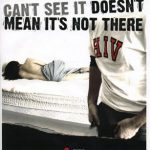Intro: Despite daunting persecution of gays in many countires, a guest author surveys mid-nineties optimistic gains in gay expression, gay pride activity and legal status around the world.
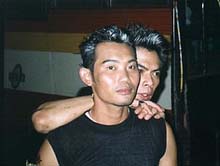 Bangkok |
by John Duvoli
The Economist
Revised June 1, 2008
Photos by Richard Ammon
Across the world a radical idea about homosexuals is gaining ground: they are, like, say, left-handers, a very ordinary minority.
After the former Yugoslav army moved out of its barracks in Ljubljana, Slovenia the homosexuals moved in. The gutted compound in Metelkova Road is hulking, derelict, folded in icy blackness on a winter’s night because the public electricity has been cut off. But make your way through a fresh-painted door and you enter Klub Magnus, another world.
The curtains are a smart yellow, the walls cheery red; generators and portable heaters banish the winter night. Twenty or 30 young homosexuals gather at cafe tables smoking, drinking, chatting. One of them, Robert, sits not far from a sign saying “All Different, All Equal”. Slovenia (population 2m) is a shard of the former Yugoslavia; unsurprisingly, older homosexuals in this corner of Europe mostly stay out of sight. Robert, who is 25, does not.
He knew he was homosexual at 15 and began telling others at 20. “I didn’t want to have a double life,” he says. “It’s more important to take the consequences and live like you want to live.” Nearby is Matej, 21, who will soon declare himself to his family. “I don’ t like to hide,” he says. And Zoran, behind the bar, 26 year old and living with his lover; “2QT2BSTR8”, says his T-shirt (“too cute to be straight”). And Janez, who is 17. “I have secrets,” he says impishly: “like my bank account.”
|
|
Homosexuality was legalised in Slovenia in 1974. The first gay men’ s organisation arrived in 1984, and a lesbian group in 1988. Last August these hosted Slovenia’s first international conference on homosexuality, which was attended by several prominent politicians and was well received in the local
press. Later this year, at another gay conference, there may be enough openly gay Slovenes for a small parade or demonstration.
Most striking, however, are these Slovene youths. In their casual attitude toward their homosexuality, and in their indifference to radical gay politics on the one hand and to heterosexual disapproval on the other, they might as easily be in Los Angeles or London as in Ljubljana. Or in a few years, perhaps, Lahore: a gay group opened its doors in Pakistan last year–and so too did such groups in Bolivia, Curacao, Kenya, Moldova, Portugal, South Korea and Sri Lanka.
In Argentina last year, homosexual groups numbering more than a dozen set about forming a national organisation; in Taiwan, the Asian Lesbian Network met to draft its new constitution. In Tomsk, 25 people turned up last May for Siberia’s first gay conference. Since the Iron Curtain fell, Eastern Europe has sprouted dozens of gay groups; last year China sprouted two.
The International Lesbian and Gay Association began with 17 member organisations in 1978; it now has about 300, representing 70 countries.
.jpg) Hong Kong |
We’re here, we’re queer, we’re boring
Sometimes, for reasons that remain but dimly understood, cultural tides wash
round the world. Janez and Zoran and Matej and Robert are part of such a global cultural shift. Something new has arrived in the world: the ordinary homosexual.
Homosexuality, one may assume, is a thing. But what kind of thing? For an individual, it is a passionate longing for the erotic love of another of the same sex. For society, however, its nature is as changeable as the norms of the day.
For the ancients (among whom what would today be called bisexuality was common), and for many people since, homosexuality was a behaviour and perhaps a proclivity, but not a defining trait. To this day, many people maintain that homosexual behaviour exists but that homosexuals, as such, do not.
Ironically, this `behavioural’ view is now mainly espoused by two groups of bitter enemies: right-wing anti-gay activists, who believe that everyone is naturally heterosexual, and left-wing pro-gay activists, who believe that sexual categories themselves are cramping and repressive.
.jpg) Israel |
Since ancient times, homosexuality has been loaded down with every kind of significance. For Christians and Jews, it was (or is) a deadly sin: one of the most vicious of vices. Later, in the 19th century and particularly with the work of Freud and his successors, came the ‘scientization’ of sexuality, which made homosexuality a matter of diagnosis, turning it into a pathology, the sign of a disturbed personality.
In the 20th century, those two streams proceeded to mix, incoherently but potently. Homosexuality came to seem a vice and a disease simultaneously, rather as though leprosy were the fault of the people afflicted with it.
As incoherent models often do, this one broke down. Change has come over the past 30 years or so in three overlapping phases. Homosexuality, first, was in many places struck from lists of crimes and illnesses. Homosexuality, second, ceased to be shameful and became ‘gay’, offering for many the cultural identity of a self-aware minority. More recently, and this is perhaps the most startling change of all, homosexuality came to be accepted as an orientation like any other.
A bland word, “orientation”. But it flags the radical re-drawing of an idea. For to call homosexuality an orientation presupposes that it is a neutral trait or disposition, like left-handedness: not changeable, or at least not changeable without deforming the bearer’s personality; not innately harmful, though perhaps inconvenient; and not itself chosen, even if the sort of behaviour the orientation prompts is a matter of choice.
In a quiet way, this latest view is more radical than any of its predecessors, because it treats homosexuals as both fundamentally distinct from the heterosexual majority and, at the same time, quite ordinary. As a minority, on this view, homosexuals may be statistically odd, but they are behaviouraly normal. And that is a new synthesis.
.jpg) London |
What is new, it should be noted, is not the homosexual flowering as such, but how it is thought and talked about. One thinks of the rarefied subcultures of Wilde and Tchaikovsky a century ago, or of New York in the 1920s, where homosexual life blossomed until a backlash of police repression drove it underground. Yet in those cases homosexuality was closely linked with strangeness and cultural rebellion. It flouted, indeed inverted, bourgeois norms by defying them in secret and, for those clever enough to read the codes, tweaking them in public (as Noel Coward in his plays and songs liked to do). When (rarely) homosexuality was noticed publicly, it was associated with artists, writers, Bohemians and provocateurs.
Today the drag queen, whose flamboyant cross-dressing both sends up and pays homage to social convention, still flourishes in gay culture. Radical politics, usually of a trendy left-wing variety, still holds sway among gay activists in America and Europe, who like to see themselves as striving to liberate not just homosexuals but the whole world. What is new, rather, is the advent of banal homosexuality. If homosexuality is at root an orientation, then it may just as easily be grey tweed as purple chiffon, bourgeois as revolutionary. It can be counter-cultural, but it does not have to be.
So emerges that rare but proliferating species: the young woman of 20 who realises she is a lesbian but, after a period of adjustment, shrugs her shoulders, informs her family, and plans to get on with an otherwise mundane life. Or the gay New Yorker who is more interested in bringing his lover to the company’s Christmas party than in overturning corporate capitalism. He neither menaces the social order, as generations of priests and headmasters maintained, nor tartly flouts it, as generations of gay rebels have done. He is, you could say, sexually left-handed: that is all.
With exceptions
.jpg) Egypt |
And yet even this de-radicalized notion of homosexuality implies a radicalism of its own. If homosexuality is just an orientation and not a cardinal sin or an unspeakable disease, there is no reason for homosexuals to hide. If it is ordinary, then it is not shameful and homosexuals can and should expect
to live openly. Increasingly, they do.
The Islamic world, it has to be said, is a large exception. Militant Islam is not kind to homosexuals; in Iran, the punishment for homosexuality ranges from 74 lashes to death. (One Swedish report, in 1991, said that 70 Iranian homosexuals had been executed.) In most of Africa, too, homosexuality remains hidden and nameless. One might fairly add that in most other places, including America and Europe, most homosexuals keep hidden most of the time.
That said, the direction of change is unmistakable. In Japan, for example, where homosexuality is traditionally viewed as weird and distasteful but not immoral, more young homosexuals are living openly instead of marrying members of the opposite sex and then dallying with those of their own. Last year saw Japan’s second gay-pride parade, whose 2,200 marchers considerably outnumbered the 1994 crowd and enjoyed corporate sponsorship (apparently a first for a Japanese gay event).
This is not anomalous. Last year the first gay page appeared in a mainstream newspaper in Turkey; an openly homosexual Pakistani poet published what may be the first book of gay verse in Urdu; and Latin America’s first gay resort opened in Brazil. In 1995 activists demanded marriage rights in Austria, Brazil, the Czech Republic and New Zealand. Estonia’s all-lesbian group started in 1990, Hong Kong’s in 1994 (followed by another last year), and Brazil has at least seven. Mexico’ s homosexual groups number more than a dozen; South Africa’s, more than 50.
.jpg) Morocco |
Even in repressive climates, homosexuals have become bolder. In 1992, when
Nicaragua criminalized same-sex relations, homosexuals responded with their first gay-pride celebration, which became an annual event. More striking still is the example of Zimbabwe. Last August, Robert Mugabe, Zimbabwe’s president, said he did not believe homosexuals “have any rights at all”,
called them “sub-animal” and threatened them all with arrest. The country’s principal homosexual group, Gays and Lesbians of Zimbabwe (founded in 1989), rallied in self-defence instead of diving under the furniture.
“It has caused us to become stronger, more determined, more visible,” says Stephen Van Breda, a 25-year-old Zimbabwean gay activist. In short, homosexuals are emerging from the closet. And, more interesting still, they are doing it in more or less the whole world at once.
Digitally queer
To understand what is going on, begin with a catalytic, and calamitous, event. AIDS is now a problem in countries around the world; and dealing with it often prods national governments–even ones that find homosexuality distasteful–to open relations with predominantly gay groups. In Malaysia, the AIDS epidemic led to the rise of a visible gay organization (Pink Triangle), which the government grudgingly co-operates with. And it is no coincidence that, in Slovenia, the government officials who turned up for last year’s conference on homosexuality came from the health ministry.
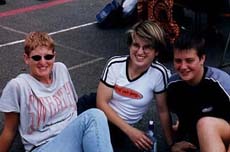 New Zealand |
Economics is at least as important. The world as a whole, rather than just the richest bits of it, is now developing its first mass middle class: people who can afford to travel, to telephone around the world, to pick and choose from a global culture and to get a westernized education. These are the people who are most likely to learn, and accept, the
“different-but-equal” model of homosexuality that has come to the fore in the West; and they have money to explore life choices that few subsistence cultures can allow. Before long a society that develops a largish and reasonably well-off middle class can easily ‘afford’ homosexuals.
A democracy, of course, is more likely to permit them: that is the story of the gay awakening in Eastern Europe, and in South Africa, where homosexual groups opposed apartheid and are now thriving. South Africa’s current constitution specifically prohibits discrimination on the basis of sexual orientation, and is the only national constitution, according to the International Gay and Lesbian Human Rights Commission, which does so. In Spain, the Franco regime made homosexuality a crime; democratic Spain decriminalized it and Spain now has about three dozen openly homosexual groups.
To all of which, add the Internet. Homosexuals are a small minority of any population. For all time until now, the overriding fact of life for them has been isolation: the inability to communicate with any but a few others like themselves. That has now changed, which means, in turn, that the very nature of the homosexual experience has itself changed. As the gay-friendly digital community grows, the impulse to hide recedes.
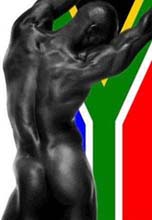 South Africa |
A homosexual youth in Birmingham, Alabama, may now “chat” with peers in Birmingham, England; a fledgling group in Portugal or Pakistan may consult almost instantly with activists in London or Los Angeles. Australia’s gay bulletin board took to the Net last year, and those young Slovenes, like many other gay groups, built themselves a site (electronic address) on the World Wide Web. Rex Wockner, a journalist in San Diego, runs a global gay news agency (which was used for this article); his dispatches, which may be perused on the Web, reach over 175 gay publications in more than 20 countries. A glance in the Queer Resources Directory turns up dozens of gay events from “A Capella against AIDS” to “Yahimba conference in Chicago” and dozens more groups. An American group founded in 1992, Digital Queers, brings other gay groups on-line.
This makes a difference. In Zimbabwe, homosexuals responded to Mr Mugabe’s attack by jumping on to the Internet and dispatching alarms in all directions; in London, “Out This Week”, a two-year-old BBC radio magazine for homosexuals, down loads this news (and much else) and flings it on to
the air. When Mr Mugabe visited Johannesburg in August, New Zealand in November and Holland in December, he was met by crowds of Net-alerted protesters (“Two, four, six, eight, is Mugabe really straight?”). “Without the Internet,” says a Zimbabwean lesbian, “we would probably have just quickly faded back into oblivion.”
Looking at all this, one would be right to say that gay men and women are emerging from secrecy. The word “emerge”, however, wrongly suggests that western-style gayness is waiting there to be unveiled. On the contrary: it is being created.
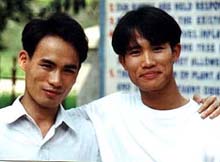 Vietnam |
In many places, gender behaviour, not sexual practice as such, has defined sexual categories. George Chauncey, an American historian, notes that this was true in America before the second world war: “fairies,” defined by their effeminacy rather than their sexual longings, were often seen as a kind of third gender, and a man could profligately enjoy sex with other men without being regarded as ‘queer’, so long as he preserved a masculine demeanor.
Today in much of Asia–Thailand and Indonesia, for instance–polite society allows a place, albeit a marginal one, for men who dress, act and socialize like women: they, too, are a kind of third gender (‘katoey’). But such a man would not
think to call himself ‘gay”, any more than a westernize gay man would imagine himself to be anything but male. In the Philippines, a woman may act the part of a man, even setting up housekeeping as the ‘male’’ side of a two-woman couple. “They act like men, and the men who are with them don’t feel threatened, ” says Anna Leah Sarabia, a Filippino activist. But such a woman would likely be bemused to be called “lesbian”.
The “orientation” view of homosexuality smashes such gender-crossing notions. It sees gay men as unambiguously male and lesbians as unambiguously female. More, it insists that homosexuality is a neutral fact, implying neither effeminacy in men nor “butchness” in women, nor, indeed, any other particular kind of prescribed social role. This different- but-equal view of homosexuality is radiating from North America and Europe, homogenising sexual culture as it goes. The result is not just that homosexuals are coming out. It is that they are learning to understand themselves as ‘gay’.
In many places, the old and new models co-exist. In the Philippines, the word ‘lesbian’ is a recent transplant, and one with which many homosexual women remain uneasy. In Japan, young homosexual men see themselves in the western ‘gay’ way, but many older ones do not. Still, what is remarkable is the pace of change. When Ms Sarabia, who is now 41, was growing up in the Philippines, an open discussion of lesbianism was unthinkable. Now it is far from well accepted, to be sure, but it is also not astounding. Filipino youths see homosexuality on western media, hear about it from gay-rights groups, and may indeed write reports about it in schools.
McGay
.jpg) Hong Kong |
In effect, what McDonald’s has done for food and Disney has done for entertainment, the global emergence of ordinary gayness is doing for sexual culture. One might fairly wonder whether such homogenization is entirely to the good. Anthropologists studying traditional models of sex and gender had better work quickly.
Here, however, it is well to bear in mind a distinction. The current western concept of a gay man or a lesbian–a person who is fundamentally different in whom he or she loves, but in no other way–is a social construction. But homosexuality itself is not. Research and experience increasingly show that, for a small minority, same-sex love is not a diversion, let alone a perversion, but a basic emotional need: so basic that it persists in the face of repression even of the most violent kind.
As the notion of ordinary homosexuality spreads, the ancient veil of secrecy and shame that was drawn over this love is dissolving into air.

.jpg)
